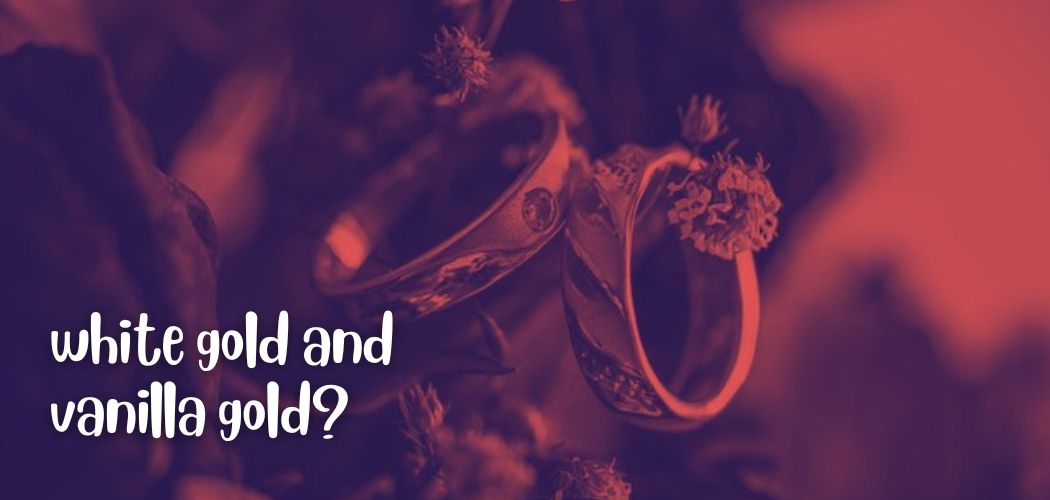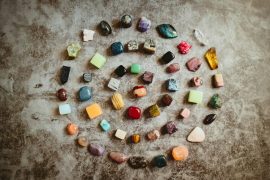We have all heard of gold, real gold or pure gold. However, turns out that this is not the only type of gold in the world of style and luxury.
If you are a jewellery enthusiast, you must have come across terms such as 14K Yellow Gold, 14K Rose Gold or 14K White Gold.
You must be wondering whether real or pure gold is always yellow.; how can we have rose gold, white gold and yellow gold?

That is achieved by simply adding metals of different colours to gold!
Just like you get orange by mixing yellow and red, you add metals of different colours to pure gold and voila! A new colour of gold is born!
Let’s see what the hype is all about and what is the difference between white gold and vanilla gold?
What is white gold?
First of all, what is white gold?
White gold was made to imitate platinum which is a naturally white metal. Platinum is 15 times rarer than gold and is the ideal choice for everyday daily wear. It does not wear away.
It is more valuable than gold.
To imitate platinum jewellery, white gold is created. It is an alloy containing around 75% gold and about 25% zinc and nickel.
If you see it stamped 18 Karat, that means it is about 75% pure gold.
Now that we know about white gold, let us move on to vanilla gold and how it is made.
Fun fact
White-coloured gold was initially invented in the 1800s. During World War 2, it became widespread and very popular because platinum was only reserved for military use!
What colour is vanilla gold?
Vanilla gold is also an alloy.
Since the majority of the mix uses pure, real gold, the colour of this alloy is similar to vanilla. Many times, people do not like the vanilla gold colour and prefer rhodium’s bright white.
Those who prefer the bright white colour of white gold can get the jewellery colour changed.
To correct the colour, vanilla gold or 14 K vanilla gold is finished with rhodium plating. Rhodium is a white-coloured metal. This alters the colour and gives a shiny, metallic look to the 14K vanilla gold.

Some people also use vanilla gold jewellery the same as it is without getting its colour corrected or changed!
After long use of time, rhodium plating can wear off. However, it can be easily applied again by the jeweller.
For instance, if you have a white gold engagement ring, get it re-rhodium plated every few years to keep its shine intact. It will again look brand new.
What is 14K vanilla gold?
Pure gold is made up of 24 Karats which means 24 parts.
Gold jewellery is available in many variants. The most common variants are 10K, 14K 18K and 24K.
14K gold means it is 14 parts gold and the remaining 10 parts are made up of other metals. 14K gold is more durable as compared to 18K gold. As compared to 10K, it is a bit more valuable too.

So, in comparison to 10K and 18K, it falls midway in terms of durability and value.
14K is the most commonly used one for jewellery.
Composition:
14K gold is created using different metals. It is made of 58.3% gold and 41.7 alloys.
Different manufacturers use varying degrees of metals for mixing gold. Mostly, copper, zinc, silver and nickel are used in addition to pure gold.
14K gold is also known as 585 gold as some manufacturers also make it with 58.5% of pure gold.
As such, such jewellery will be stamped 585 to show its purity. This means it contains 583 grams of gold per thousand.
Because of this unique combination, the 14K vanilla gold is resistant to rust, corrosion and tarnish.
Appearance:
As compared to 10K gold, 14K vanilla gold has a brighter hue but it doesn’t look as vibrant as pure 24K gold.
Usage:
It is mostly used in engagement and wedding rings.
The best thing about 14K gold is its durability and affordability. However, for the wearer, there is also the risk of allergic reactions to any alloys in the jewellery.
Types of 14K gold:
14K gold is not just available in vanilla gold!
You may select 14K vanilla gold but that shouldn’t stop you from exploring all the options!
14K gold is available in white gold, rose gold and yellow gold colour.

The colours of all these types of gold are entirely dependent on the type of metal alloy used. You can pick any colour you want, based on your personal preference as well as budget.
Out of all these, 14K vanilla gold is the most hypoallergenic type. However, the downside is that it needs regular upkeep to maintain its shine and lustre.





